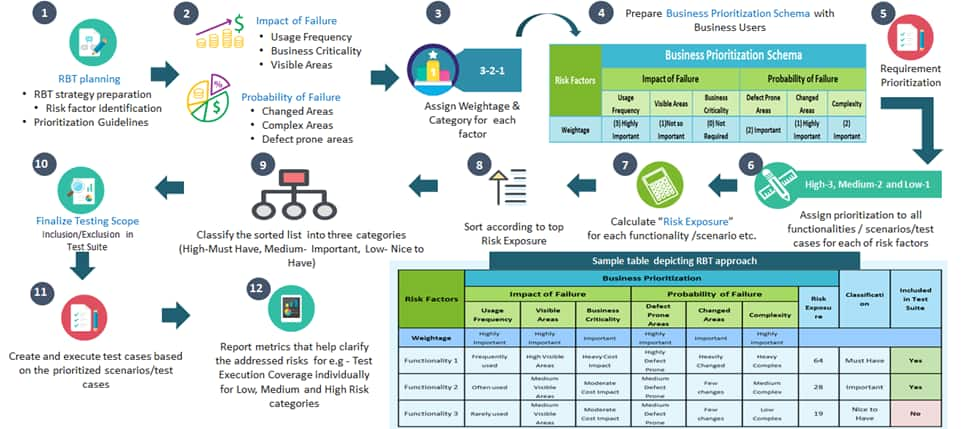Purpose – The purpose of this document is to provide an approach to Risk-based testing
Intended Audience
Maintenance of the document
Review this document at least once annually and update it. QE Chapter team is a custodian of this document and is responsible for maintaining in centralized document management tool and sharing it with Squads. QE Chapter team will receive project requirements (If any specific) and feedback periodically to review and update the document as required.
Objectives – The objective of defining the Risk-based testing approach is to identify the test cases that are high-risk prone and execute them in the given timeline
Description – Risk-based testing approach is a method of identifying the critical and important tests through the Risk analysis process
Risk-Based Testing Approach
Risk-based testing approach is depicted in the below figure. The approach is defied right from planning to execution and capturing metrics

Business prioritization schema
This represents the schema which defines the weightage of the various identified Risk Factors. Though the Risk Factors identified here are considered exhaustive, additional factors might be added if required. The weightage for the Risk Factor is normally decided in consultation with the Business analyst. Normally for every project, a new set of weightage values are defined.
All weightage values have a range from "Highly Important,” "Important,” "Not so Important," to "Not Required.”
Highly Important: Most important Risk Factor
Not so Important: Least weightage so least important
Not Required: Not required for the project
| Risk | Business Prioritization Schema | Probabilities | ||||
|---|---|---|---|---|---|---|
Risk Factors |
Impact of Failure |
Probability of Failure |
||||
Usage Frequency |
Visible Areas |
Business Crirticality |
Defect Prone Areas |
Changed Areas |
Complexity |
|
Weightage |
Highly Important |
Highly Important |
Important |
Highly Important |
Important |
Highly Important |






